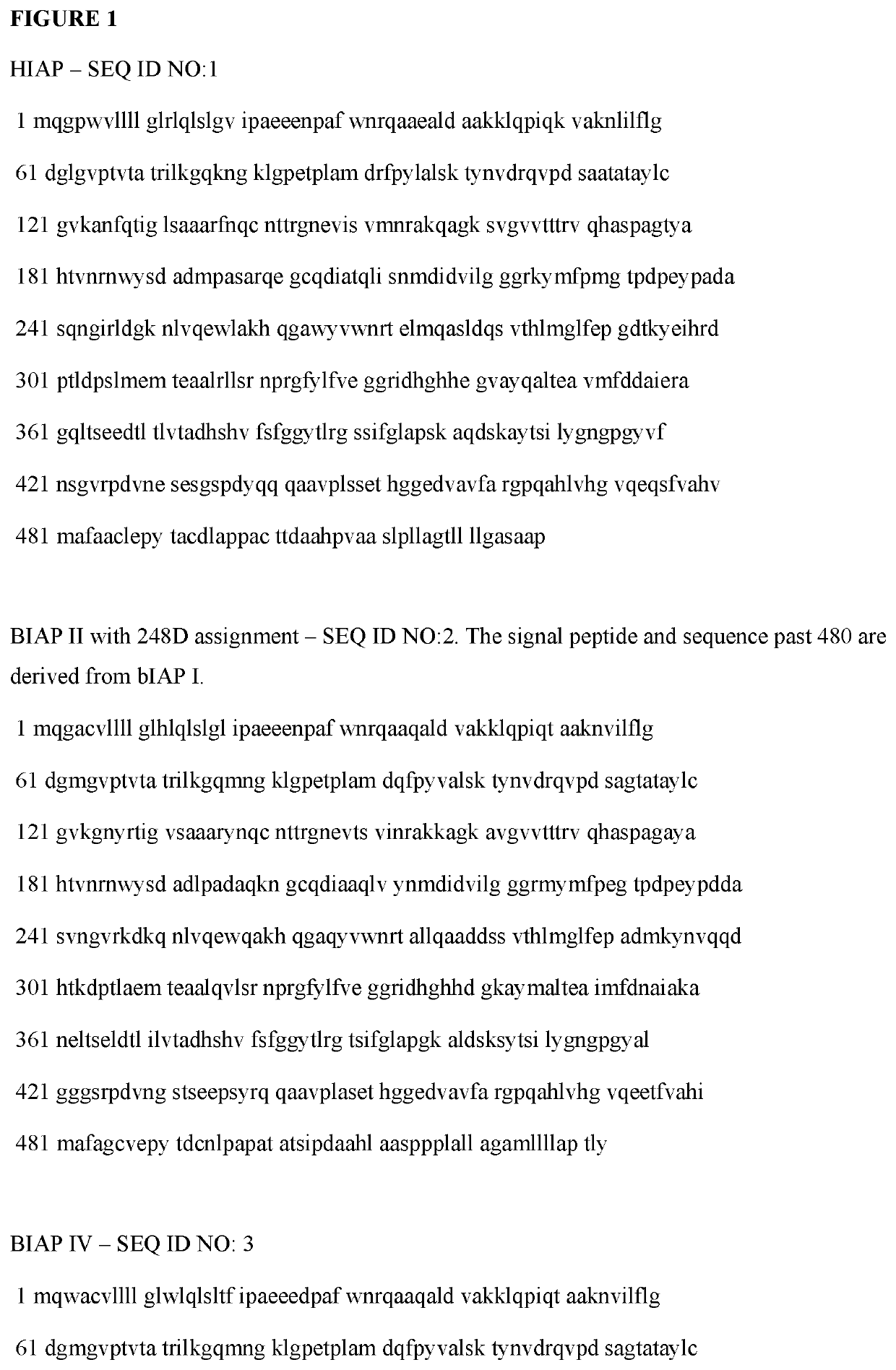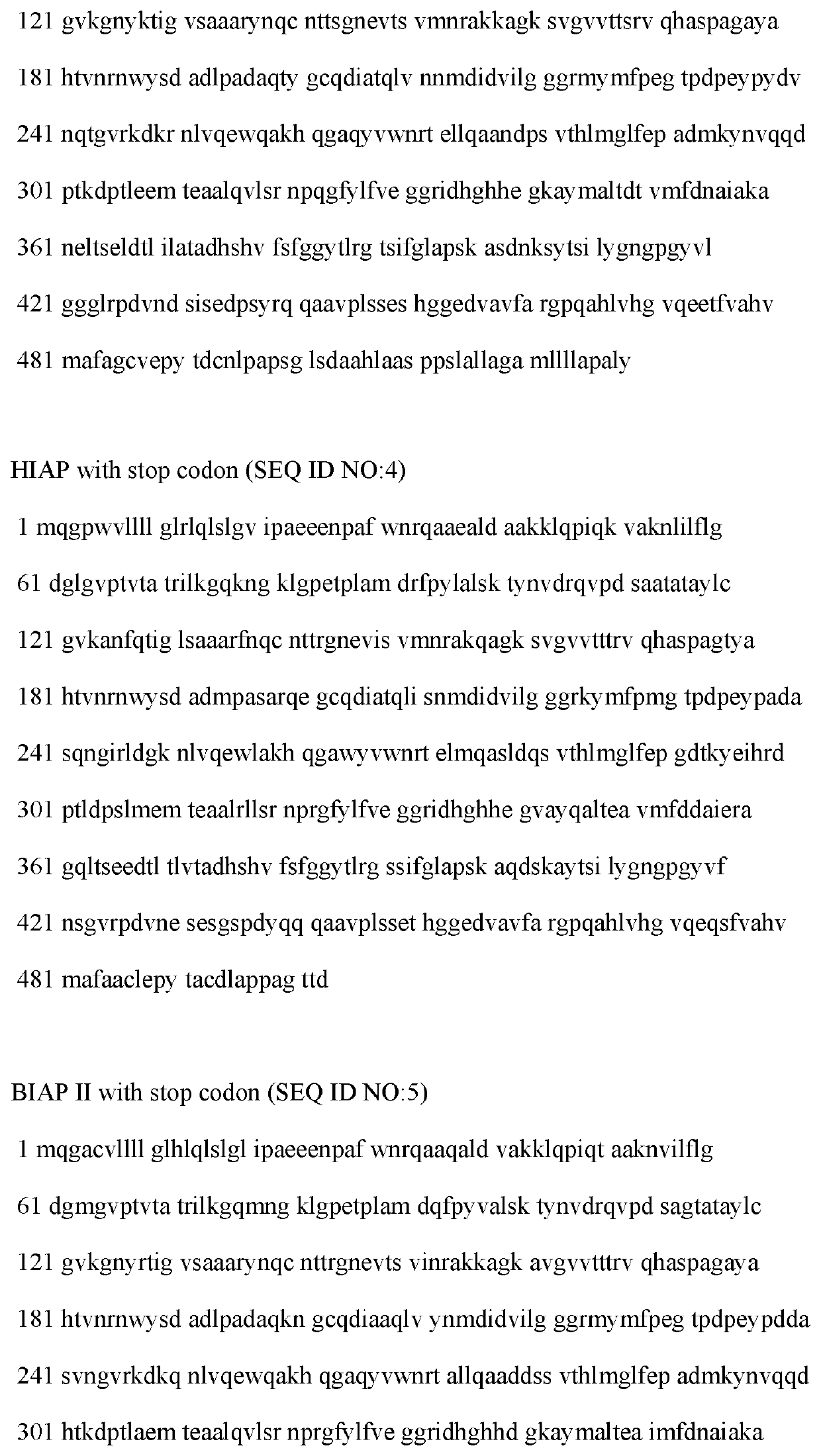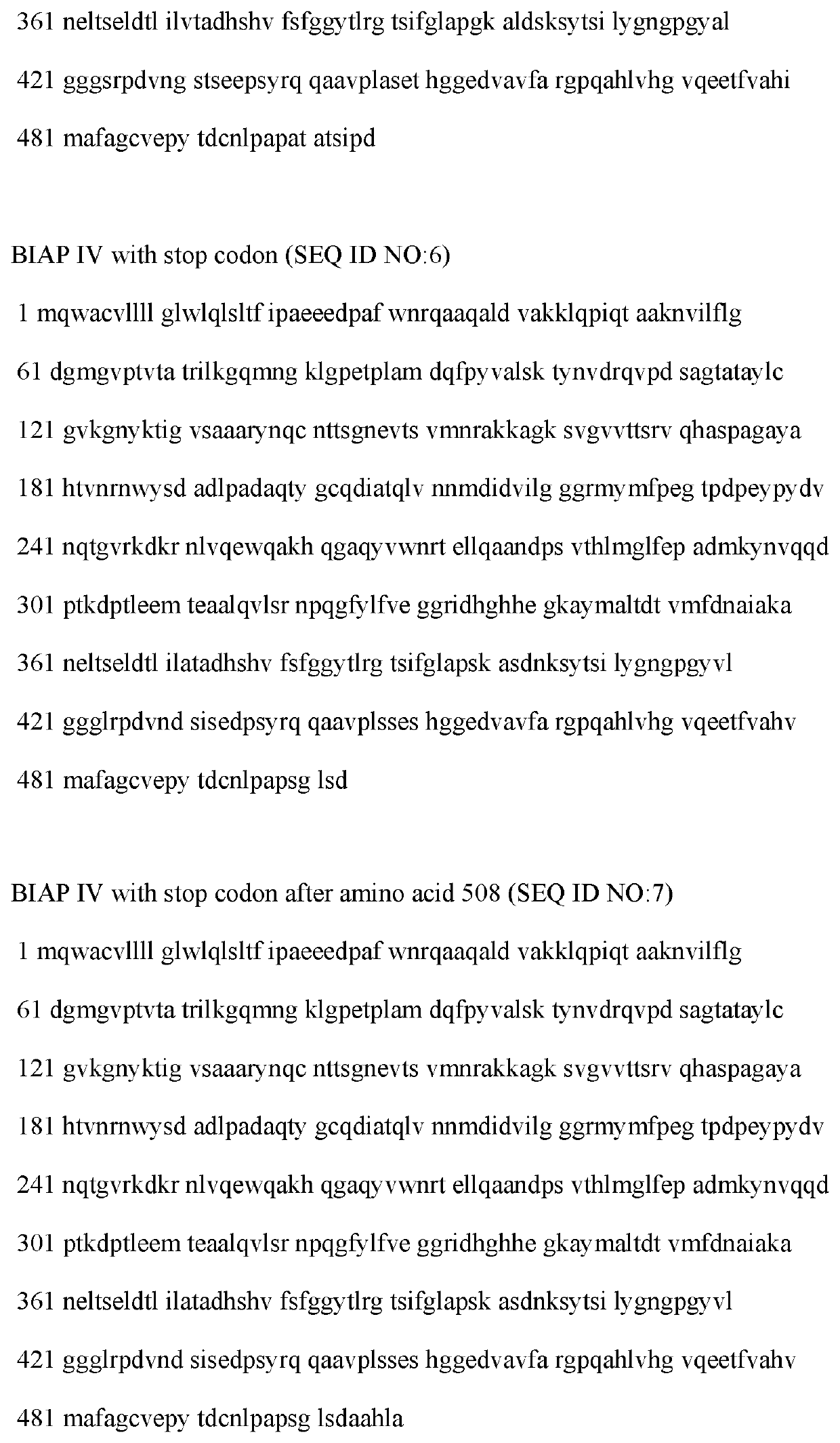Methods of making alkaline phosphatase agents
a technology of alkaline phosphatase and alkaline phosphatase, which is applied in the direction of artificial cell constructs, genital tract cells, genetically modified cells, etc., can solve the problem that ap is difficult to express to high levels
- Summary
- Abstract
- Description
- Claims
- Application Information
AI Technical Summary
Benefits of technology
Problems solved by technology
Method used
Image
Examples
example 1
n of IAP in a Bioreactor
[0263]An IAP-encoding transfected CHO cell line was provided. The cell line was seeded in a 3 L bioreactor (Moebius® CellReady 3 L, Merck Millipore) at a seeding volume of 1.1 L, and the cultures were maintained for a period of 14 days. A total of three different conditions were established and run (see Table 1). Conditions 1 and 2 were run in duplicates, while Condition 3 was not run in duplicate. Seeding density varied among the three conditions, as shown in Table 1 below.
[0264]The initial culture medium consisted of EX-CELL® Advanced CHO fed batch (Sigma-Aldrich) supplemented with 4mM Glutamine (Gln), 1×HT Supplement liquid (a mixture of sodium hypoxanthine and thymidine), 80 μM ZnSO4, 1mM MgCl2, 0.11% poloxamer (e.g., Kolliphor P188), and 0.1% antifoam. The cultures were fed batch daily with two different feeds (Feed A and Feed B) at varying percentages among the three conditions, starting on day 2 and ending on day 13.
[0265]Specifically, Condition 1 was ...
example 2
of IAP Produced in Bioreactor
[0272]Surprisingly, the IAP produced in the bioreactor process under Condition 3 exhibited higher alkaline phosphatase (AP) activity (U / mL), specific activity (U / mg), and total active AP units, as compared to IAP produced in the bioreactor processes under Conditions 1 and 2. As shown in FIG. 2, the IAP produced from Bioreactor 7 (BR7, under Condition 3) exhibited higher AP activity, specific activity, and total active AP units on Day 14. Similarly, FIG. 3, FIG. 4, and FIG. 5 depict the differences in readings of AP activity, specific activity, and AP total active units, respectively, on days 12, 13, and 14, among IAP produced under all three conditions. For example, FIG. 2 shows that there was about a 37% increase in specific activity and about a 31% increase in AP activity of IAP produced in BR7 (Condition 3, with an addition of 80 μM supplemental ZnSO4) as compared to BR2 (Condition 1, with no addition of supplemental ZnSO4).
[0273]Various metabolites, ...
example 3
m Analysis of Large-Scale Bioreactor IAP Production
[0276]IAP was produced in large-scale bioreactors at 3 L, 50 L, and 200 L. Product quality measurements were conducted on the IAP product for each of the various runs.
[0277]For each bioreactor size, the runs included an initial amount of ZnSO4 and MgCl2 added per liter of medium. For the 3 L reactor, 40 μM solution ZnSO4 was initially added per liter of medium, and 1 mL of 1M MgCl2 was initially added per Kg of medium. For the 50 L reactor, 40 μL of 2M solution ZnSO4 was initially added per liter of medium, and 1 mL of 1M MgCl2 was initially added per Kg of medium. For the 200 L reactor, 40 μL of 2M solution ZnSO4 was initially added per liter of medium, and 1 mL of 1M MgCl2 was initially added per Kg of medium.
[0278]On Day 11 of each run, an addition of 40mM solution of ZnSO4 was conducted in order to bring the concentrations to established levels: the 3 L reactor concentration brought to 80 μM; the 50 L reactor concentration broug...
PUM
| Property | Measurement | Unit |
|---|---|---|
| Temperature | aaaaa | aaaaa |
| Temperature | aaaaa | aaaaa |
| Temperature | aaaaa | aaaaa |
Abstract
Description
Claims
Application Information
 Login to view more
Login to view more - R&D Engineer
- R&D Manager
- IP Professional
- Industry Leading Data Capabilities
- Powerful AI technology
- Patent DNA Extraction
Browse by: Latest US Patents, China's latest patents, Technical Efficacy Thesaurus, Application Domain, Technology Topic.
© 2024 PatSnap. All rights reserved.Legal|Privacy policy|Modern Slavery Act Transparency Statement|Sitemap



